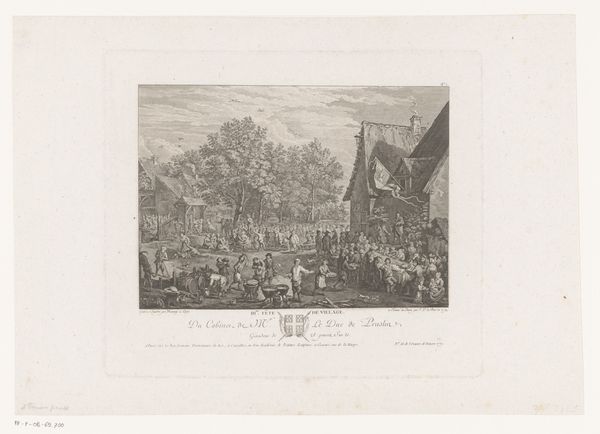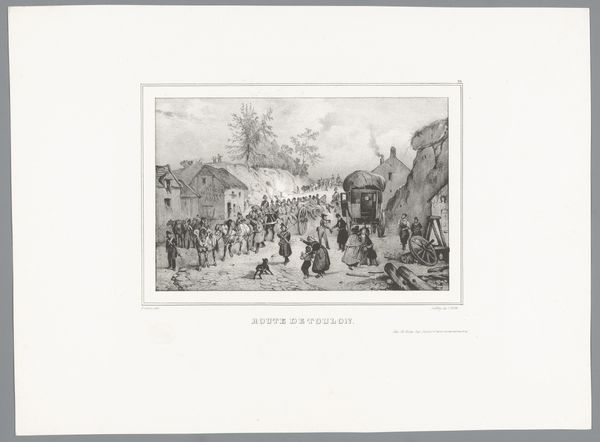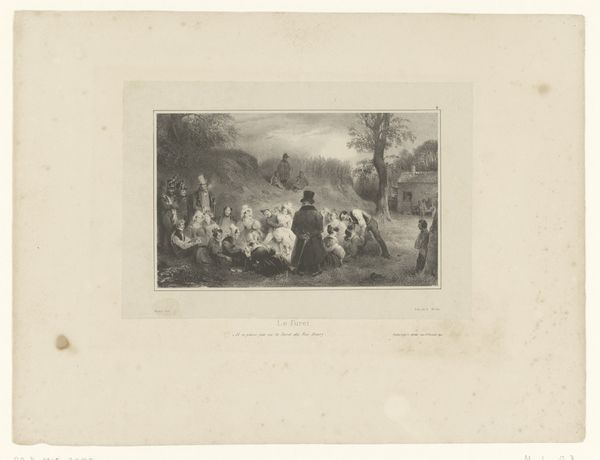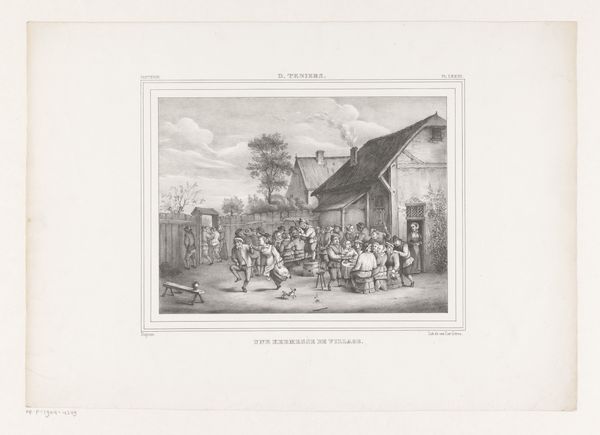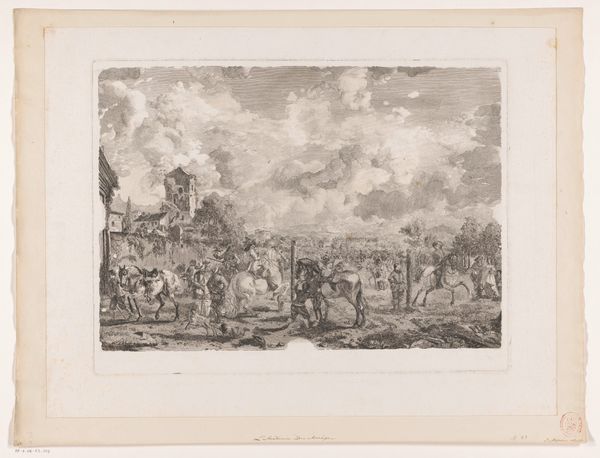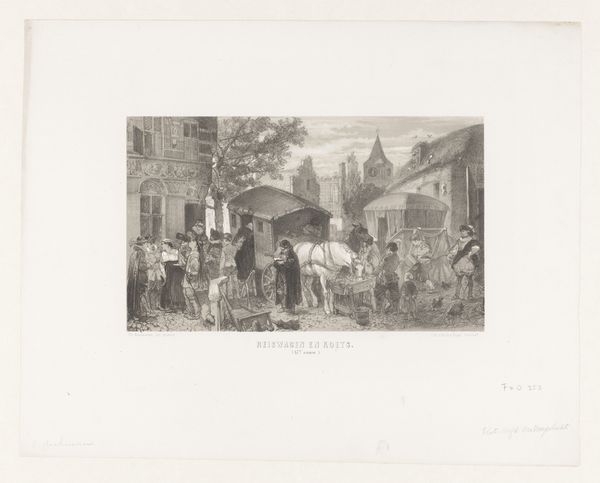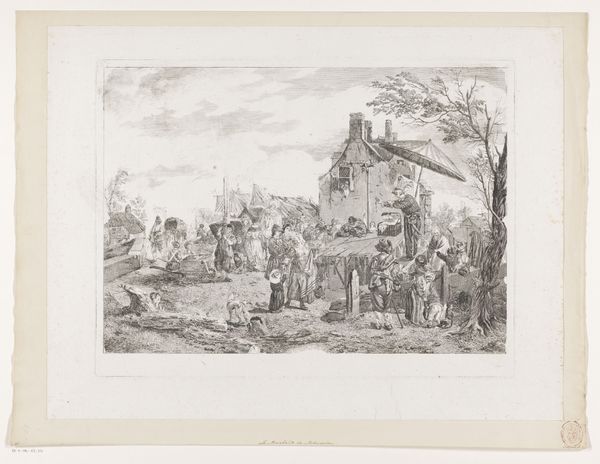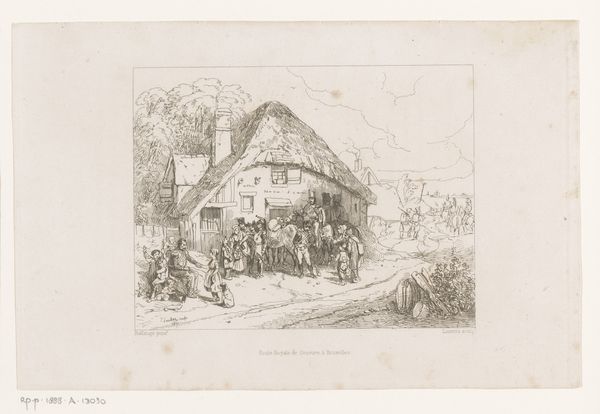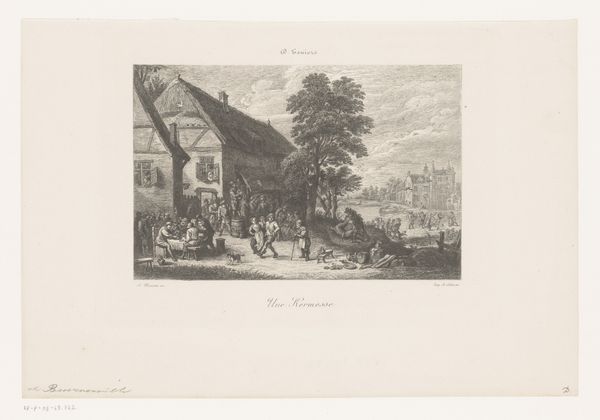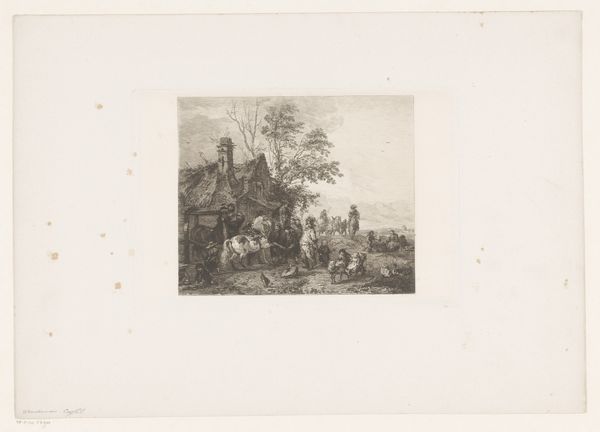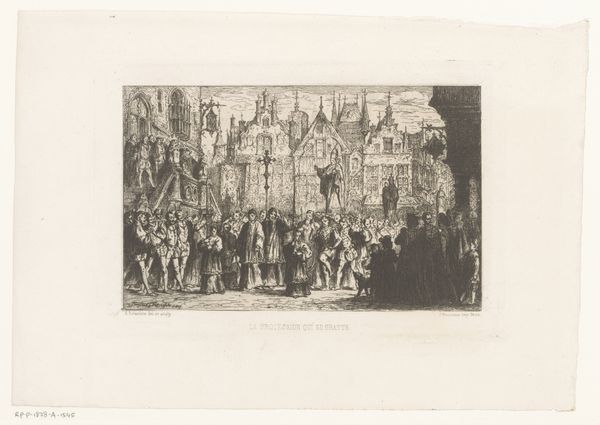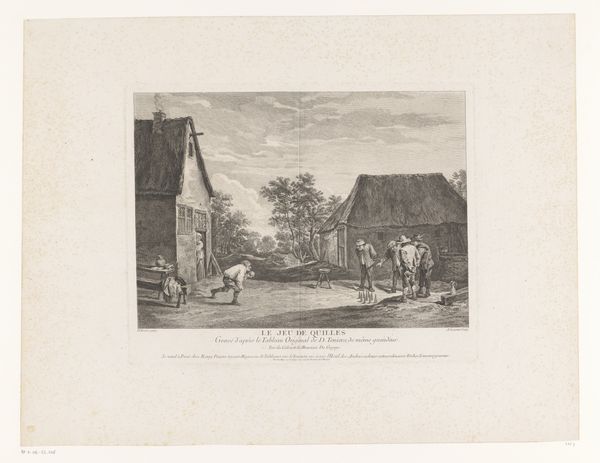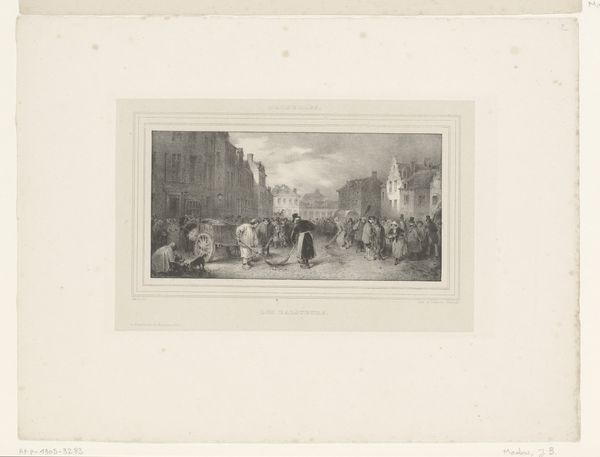
drawing, print, etching
#
drawing
# print
#
etching
#
old engraving style
#
landscape
#
genre-painting
#
realism
#
monochrome
Dimensions: height 356 mm, width 417 mm
Copyright: Rijks Museum: Open Domain
Curator: What a delightful scene. This is William Unger's "Dorpskermis," created between 1861 and 1889, housed here at the Rijksmuseum. It’s a print, specifically an etching, showing a village fair in full swing. Editor: It’s so lively! A monochromatic explosion of human activity. The light and shadow create an atmosphere of almost chaotic merriment, like a snapshot of a community in pure revelry. Curator: Indeed. Unger’s etching captures the heart of a traditional Dutch village fair. Observe the building on the left: crowded tables suggesting food and drink, and the dance in the center as a nucleus. Fairs historically played crucial roles in community cohesion and, frankly, economic vitality for many, many years. Editor: You know, what strikes me is the depiction of leisure within the context of labor. While these fairs appear festive, they’re also about reaffirming social bonds that held those communities together. It seems that the etching underscores the socio-economic structure, suggesting an intermingling across classes, if even for a fleeting moment. Everyone’s there – the have and the have nots. Curator: An interesting point, certainly reflected by those standing or seated on the periphery. But do we see other more perennial symbols, I wonder? Take note, for example, how the artist captured that dance; a seemingly simple act, but historically a complex movement reflecting social roles, rituals, even courting customs. And the tavern is present. A historical signifier not just for indulgence, but where politics, trade and dissent came together. Editor: Precisely, all interconnected parts. This seemingly innocent fair serves a greater function. We can think about accessibility too – it depicts an important part of social culture but in this format it makes it more accessible and democratic because it means that people can buy these prints, meaning you don’t have to be able to visit this one event to share in it. Curator: The etching captures the temporal quality of such festivals perfectly. Unger's art captures social communion but, thanks to its reproducible nature, transcends a particular experience offering continuity over place and time. Editor: It's the visual story of human relationships at its most essential— fleeting joy amidst societal realities. Curator: Exactly. I see something enduring in this depiction of human engagement – connections that remain regardless of medium, place, or time. Editor: And the way this fair brings the whole community together is powerful reminder that shared experiences shape us, reflecting not only on what it meant to participate in society in those moments, but allowing the people of our time a connection to them.
Comments
No comments
Be the first to comment and join the conversation on the ultimate creative platform.
